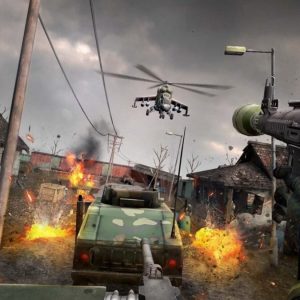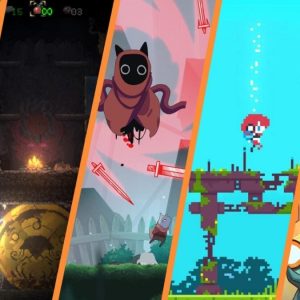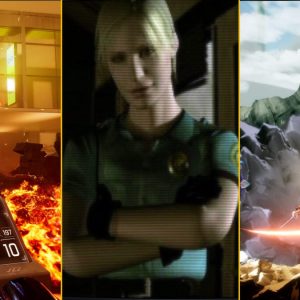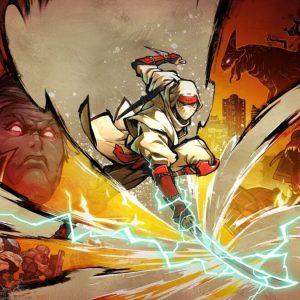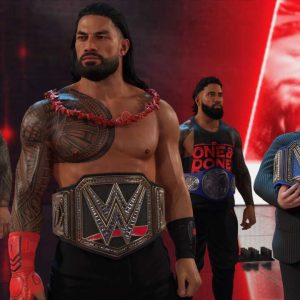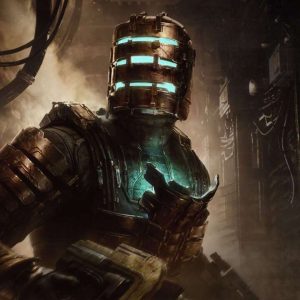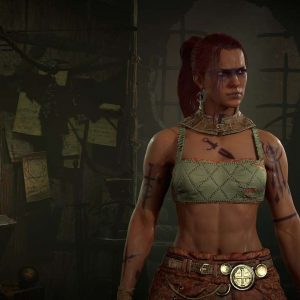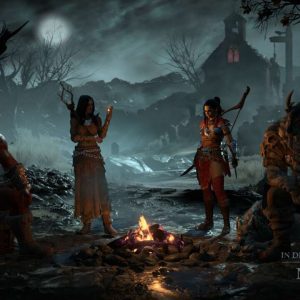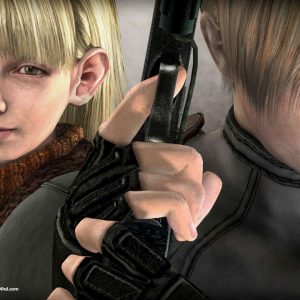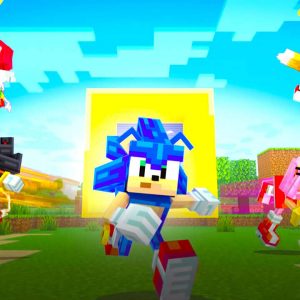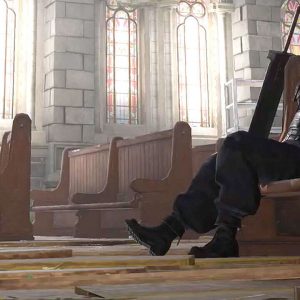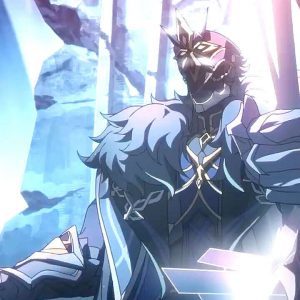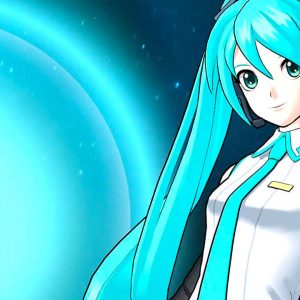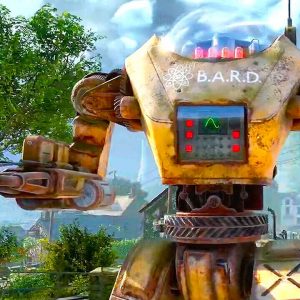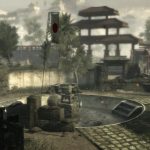At the Develop Conference in Brighton, MachineGames’ Design Director Jens Andersson and Audio Director Pete Ward told an audience how the Swedish studio approached making Indiana Jones and the Great Circle, the well-received return of the adventuring archaeologist to the world of video games.
Their talk revealed a number of insights into the stresses of the game’s development, how it all came together pretty late in the day (as video games tend to), and the audio quirks that threw more than a few spanners in the works. But what shone throughout was just how much effort the developers put into recreating the world of Indiana Jones as authentically as possible. Everything from the iconic sound of the whip to how market stalls would have looked in the late ‘30s was fussed over in order to help create the right atmosphere for the game.
And it worked, with significant praise from critics and players alike. IGN’s Indiana Jones and the Great Circle review returned a 9/10. We said: “An irresistible and immersive global treasure hunt, and far and away the best Indy story this century, Indiana Jones and the Great Circle doesn’t belong in a museum; it belongs on your hard drive where you can play the heck out of it.”
DLC beckons, and questions are swirling around a potential sequel, set up by the ending of The Great Circle itself. It was with all this in mind that IGN sat down with both Andersson and Ward at Develop to follow-up on their talk, to find out more about the dramatic changes that were made in its last year, and to ask a few cheeky questions about the future.
IGN: There was something interesting that you said in the talk, which was around licensing. You said that at the start, the iconic Indiana Jones music had to be licensed. It wasn’t a given. And that surprised me, because I would’ve thought that when it’s agreed to do an Indiana Jones game with Lucasfilm, that just all comes as part of it. That there wouldn’t be subsequent things that you’d have to do for individual bits, especially something so big and important as that. So it’d be great to get some insight into the process you had to go through to get all that agreed.
Pete Ward: So for the music, I don’t actually know how all the legal framework and systems work exactly. From my perspective, I just knew that we needed to get this theme and also Marion’s Theme, and also the music from the Peru section of the level, because that’s original John Williams scoring as well.
And we didn’t want to use the original recordings because then there’s a mechanical copyright issue there as well, and we’d have to license all that too, because mechanical copyright is the scoring or composition copyright. So that’s why we recorded all of our music, again, it was re-orchestrated, we recorded so that we — by we I don’t mean MachineGames, I mean Disney — owned the mechanical copyright for those new recordings.
But we needed to make sure that we were allowed to use the Raiders March theme, which is the famous one everyone knows. And we agreed that we could use that wherever we wanted in the product. So there was an unlimited number of times that we could quote it or reference it. But then for some of the other themes like the Peru content, we agreed to use that once, and we agreed to use Marion’s Theme a handful of times. There were very specific legal rules that we had to follow, and what we could use where and when, and all that stuff had to be approved and agreed by Lucasfilm Games obviously as well.
Jens Andersson: Is this because they have on their end agreements with John Williams?
Pete Ward: I think it’s to do with that. So that had to go through our legal team and they did a really good job with that. It took a little while to get through and we had to assume that we’d be able to use it and then confirm we could during development.
Jens Andersson: And they are super careful about that stuff, which kind of makes sense. Like all the rights, it goes for fonts, it goes for everything. It needs to be by the book.
Pete Ward: The other sound example is there’s some specific Marion lines in the first level that were performed by Karen Allen. They’re recordings from the original films, and those had to be licensed properly as well. We couldn’t just take that and use it.
IGN: Some people would have liked to hear a bit more John Williams in there, but maybe that’s to do with what you’re talking about, which is it is not as simple as just having access to everything that’s ever been, and you have to almost go piecemeal with it.
Pete Ward: Well, we had really careful discussions actually with Lucasfilm Games throughout about where to first use the theme, and how it should be used. We definitely had feedback that people would like to hear The Raiders March more, but then when we’re developing it, we didn’t want to create a game where every time you punch someone heroically, you get that theme. People would get tired of it in the end.
So there was a bit of feedback and back and forth about how we should use that theme. And one of our main goals was to use it in the same way as it was used in the movies. And it gets quoted in the movies a number of times and there are some bits where it’s quite strong, but you only really hear the whole thing as far as I know — I hope I don’t get this wrong! — but you only really hear the whole thing in the credit sequence at the end. So the whole thing leads up to that and then you get the dun, dun dun dun… and it rolls out along the credits. So we were trying to emulate that basically. We wanted to use that theme where it really mattered and we needed to hear that.
IGN: One of the other interesting things you said in the talk is that the design changed quite late in the day. It didn’t sound like this was a massive surprise to anyone, more just this seems to be the way MachineGames develops games and yes, it can be stressful from what you were saying in the talk, but ultimately everyone understands the bigger picture.
Jens Andersson: Most days.
IGN: Were there any specific examples where you had to make a dramatic decision late in the day that people who played the game will recognize as being a good decision, they got something that they wouldn’t have otherwise experienced it, or maybe something that you had to say, this isn’t going to work, we’re just going to have to cut this?
Jens Andersson: It is really hard to remember to be honest, because a lot of things change a lot of the time. Luckily it becomes smaller and smaller, but at the time it feels really, really big. One thing that I remember, it was just four months before we shipped, we changed how we set up the in-game guidance system, like markers on-screen and stuff like that. Sort of really committed, this is how we do it and we had to redo the whole thing. It turned out really well…
IGN: People love the map in the game.
Jens Andersson: Yeah. Basically if you walk around in “lowered” mode, you see markers in the world. And that’s something we fought for a long while. We didn’t want to have markers in the world because we hate games where there are constantly markers in the world and they start looking at the markers and you go follow them.
But having that only appear in this “lowered” mode as we called it, that proved to be this good balance where it was still very much opt in for the player. But it took us a lot of iterations to get there very late into the process and obviously had a huge effect on evaluation of player guidance. And even we weren’t always sure that the player would understand this, discover this by themselves.
So a lot of these kind of things that feels like in the end it’s like, oh, when do we turn this on? When do we turn it off? That feels like it’s a small code change, but it has huge implications for how people play the game.
IGN: And that was just a few months before you shipped?
Jens Andersson: Yeah. Similar with the whole stealth UI. We have these markers on top of a more classical version. We had a completely different system six months before ship that was hub based, more like if you know Fortnite, how you see firefights. But in the end decided that it wasn’t clear enough, we were going to go back to previous design and do that.
So it’s iteration and it’s frustrating and it’s hard and at that point when the pressure is really on as well, it becomes very emotional. You invested a lot of time, a lot of effort, a lot of work, a lot of pride in this is what we’re doing, and you need to be absolutely convincing to the rest of the team: this is how it’s going to be in the game, this is going to be excellent. And then one month later it’s like, no.
But speaking about MachineGames in particular, I know other studios who do this completely differently, but MachineGames has a strong tradition of doing it like this. There’s a lot of fear that plays into this kind of final phase of development, where what if you make the wrong choices? And you rarely know all the consequences of the decisions you need to make. You just need to trust your gut sometimes and say this is going to make the game better, trust me. And you’ve been arguing about this for years usually, and you have all these kind of informations and all the permutations and everything, and there’s no explaining that.
So people are like, Jerk [Gustafsson], our game director, he needs to be the one saying, okay, this is what we’re going to do. I know it’s late, we are past beta, but this is the feedback, this is the data that shows we need to change. This is what we’re going with and this is what we know is going to happen when we do this. And then most of the time it’s correct.
Pete Ward: My experience of that was that Jerk would quite often come into my room and ask me what the audio consequences of a particular change would be. For example, putting an interactive moment or taking one out or something like that, he would come to me and ask me how bad would it be if we do this? And that was really nice because sometimes it was very easy for us because of how all the scenes were put together, and sometimes it would be very, very difficult and expensive.
I had the opportunity to say, to just give Jerk that information and then he could choose whether he wanted to, and why he wanted to do that. But I felt like I was listened to and my team was listened to, rather than things just happening. The big stuff we were consulted about and that was nice.
IGN: The game really came together in the last year, but it had been in development for five years?
Jens Andersson: Yeah, almost five years. But it is always hard to put a starting point on development. The first six months was just a few people, but yeah, almost five years is a good answer.
IGN: I often hear from AAA developers that this is often the case, that there’s no game at all and then all of a sudden there is a game, which must be very difficult to have to plan for because you can’t really know until right at the end if something’s working.
Pete Ward: It’s terrifying!
Jens Andersson: Yeah, it’s not a great way to work. I wish there was a different way to work.
Pete Ward: Yeah, the reason it’s terrifying for me is because there are some big things in audio, like massive tankers that take a long time to steer music. Recording on this game is one of those. If we were making a game that was not fully orchestral score and recorded, it would be easier because we can make changes later.
But when you have to commit to recording sessions and compose well in advance before you know actually how much you need, that’s a bit tricky. Lots of games have a lot of localization in as well and lots of VO, but that’s one of those things where you have to get the script locked and record it and then do the localization and there’s big processes that you can’t just change on a whim.
IGN: One of the other things that came through really strongly from the talk was how much effort went into trying to make it authentic as a period piece, which I think people really did appreciate. I’d love to get some more insight into some of the extreme lengths you went to try and make it really feel like what it would be like at that time period in all those locations around the world.
Jens Andersson: I have an anecdote that I really like personally. A lot of the game takes place in the Vatican and we had artists who went there. I remember having a conversation with one of the designers about the opening level in the Vatican where you scale the Castel Sant’Angelo. We had some player guidance problems there and everything and I asked, how about we do this and that and this? We change, we move this thing so you come up there instead of over there. And the answer is, well then it wouldn’t look like it does in real life. And I was like, what do you mean? Yeah, here are the reference photos. And they pulled up the reference photos and it looked identical, almost.
And it’s almost like an opportunity lost here because players don’t really understand how accurate it is. I proposed a developer’s commentary mode where you could pull up the photos and see the reference. That would be super cool! Who knows, one day when they do the remake in 20 years!
But it was so ingrained with the team that this is important. We had that throughout. I know they worked a lot with Sukhothai, really fought hard to dig up old photos from when they first started excavating Sukhothai and the temples around there just to find reference for how it actually looked before. Now it’s very clean and touristy with walking paths and everything. But finding good references to that. And then of course our layer on top of that, the whole thing is flooded as part of the narrative twist we have to Sukhothai. What would it look like in 1937 if it was flooded and the enemy was there doing huge excavations?
IGN: And it sounded like you found quite a character to help you recreate the whip sound? I have a picture in my head of some sort of Thor looking character wearing very little smashing trees with a whip or something. I dunno if that’s the reality?
Pete Ward: You’re not totally wrong! I think his company’s Witchcraft Whips. He’s based up in northern Sweden somewhere. He builds whips. He’s won competitions doing that as well. He was just incredibly good at consistently cracking in different locations with different methods. So yeah, it was much better than me doing it!
Jens Andersson: We had one of those whips in the motion capture room in the basement.
IGN: Did you have a go?
Jens Andersson: Yeah, yeah, absolutely! I think everyone did at some point, walking down there and there’s no one around, trying…
IGN: But beyond just the audio, it sounds like it was quite a design challenge to make the whip because of course that’s going to be one of the central pieces of the game, but making that into a fun AND functional part of the game that doesn’t clip through things or look like it’s broken and the animations make sense. That must’ve taken years to perfect?
Jens Andersson: It took years, absolutely. And it took years because we kept changing inventory systems. Right now we have a reserved button for the whip, but that wasn’t always the case. In an earlier version you had to equip it, stuff like that. And then really the challenge was to find great opportunities in gameplay to use it. It isn’t a very natural tool for an action hero.
IGN: Or games really. You don’t really have first-person games that revolve around a whip.
Jens Andersson: No, because it’s not very effective.
IGN: It’s not a gun.
Jens Andersson: It’s not a gun. Or a flyswatter. So the traversal stuff, that was pretty clear where we needed to go with it. Scale walls and all that kind of stuff. But we tried a lot of different things, using it in puzzles and stuff like that. But I think it started to come together when we started using it as an entry point to combat, is kind of the final pitch for how it was used in combat. So you can use it to disarm, but you can also use it to pull people into what we call ‘clinch.’ So it became a good reminder to the player, here’s a good opportunity for the whip, use it to disarm, run up, punch them, rather than try to fiddle with it mid-combat. At the same time we were careful not to create a situation where you could whip people to death. It comes with certain problems…
IGN: People definitely would have tried that!
Jens Andersson: Well… they do! So all these things in conflict at the same time, you’re just trying to get a fun semi-chaotic combat experience that fits in Indiana Jones.
Pete Ward: And those little set piece moments are really fun as well. You disarm someone and pull their weapons to you, or trip them over or something, or whip them in a place where they don’t want to be whipped and they have an animation reacting to that, which is fun.
IGN: Some Indiana Jones fans really want to know if your game is canon alongside the movies. Did you ever care that much about that? Did you have to make the game make sense within the context of a Lucasfilm guided canon? You are set between two movies.
Jens Andersson: It was super important for us to create this authentic Indian Jones experience and we worked directly with Lucasfilm games on doing that. And that was in their interest too. I know the word canon… it’s the word that’s banned more or less because it comes with a lot of baggage. So it doesn’t matter, is the point. People can change things later on. It’s their IP, they can do whatever they want. What’s important is that we’re creating an authentic Indiana Jones experience with the backing of Lucasfilm, and making sure it fits into the universe. We really feel like we are extending the world. Our game is contributing to what Indiana Jones is. And I feel like we have absolutely Lucasfilm Games’ backing on that and that’s what they’ve expressed as well.
IGN: You went with the likeness of Harrison Ford and very successfully recreated his likeness, but obviously Troy Baker for the performance. Was there ever any thought about recreating Harrison Ford’s voice through whatever means, whether that be technological or with his involvement? Did you ever have any considerations of doing what I know IOI is doing with James Bond where they’re creating an original likeness of James Bond? Was it ever on the table to do either of those things?
Jens Andersson: Indiana Jones is so tied to Harrison Ford as a character, so it would be a worse Indiana Jones game if we couldn’t use this likeness. And we chose in-between Raiders and The Last Crusade intentionally because that’s Harrison Ford’s Indiana Jones in his prime. That’s the one you want to be. That’s the one I want to play. So for us, that was always a given.
And as for the voice, it became very clear very quickly when we got Troy Baker on board, that was the way for us to go. I can’t speak about all the things that went on before that, but very soon when he came in, he can do it. And we were so incredibly lucky to have him and his enthusiasm, just the effort he put into creating his version of Harrison Ford’s Indiana Jones. And you see that right?
IGN: Yeah. And Harrison Ford loved it!
Jens Andersson: And that was such a good moment for us as well, at The Game Awards when he came out and basically gave praise to… this is the way to do it. And that felt like, yes, that means a lot coming from him.
IGN: I’d love to talk to you about the future. You’ve got the DLC coming out obviously, and there’s been a little bit of information about what fans can expect from that. This DLC is set during the events of the game itself as opposed to continuing the story from the ending of The Great Circle.. So just to make that distinction, is it the case that this isn’t going to resolve all the teases at the end of the various endings that are in the game and all the Antarctica pointers and stuff?
Jens Andersson: It is self-contained. It is set in Rome. It does take place during the events of the main storyline. A lot of this stuff, I think we’ll talk more about Gamescom so we can’t talk too much more about it.
IGN: I’d like to ask about a potential sequel, which your ending did tease, especially the secret ending obviously. I’m not expecting anyone to confirm Indiana Jones and the Great Circle 2 or anything. But from your point of view, would you like the opportunity to pay off that tease? Is there an internal drive to want to do that? Or was it always designed to just be a sort of like, if this is the only one that can happen, that’s how you set out to make it, that’s fine and you’ll be completely happy with that? Is there a grander ambition story wise, which the game itself does suggest for you to realize at some point down the line?
Jens Andersson: Obviously we can’t talk to anything about future projects at this point. But it’s still easy to answer your question because all the individual Indiana Jones movies have self-contained stories.
IGN: They don’t have secret endings though that suggest future destinations that players might be able to experience at a later time!
Jens Andersson: There are so many storylines in the game, right? So you can do whatever. But yeah, no comment!
Wesley is Director, News at IGN. Find him on Twitter at @wyp100. You can reach Wesley at [email protected] or confidentially at [email protected].





